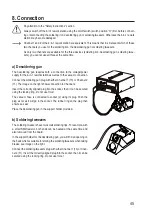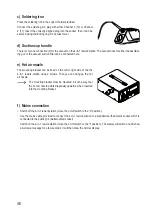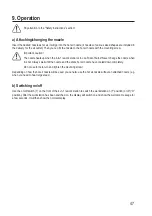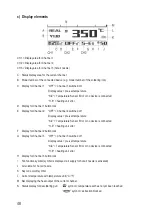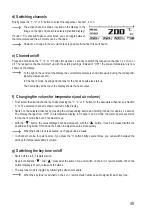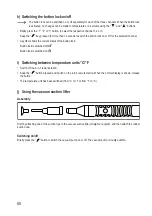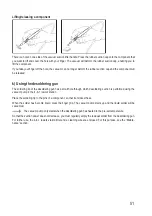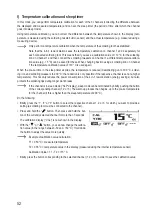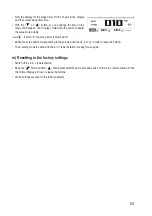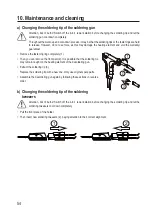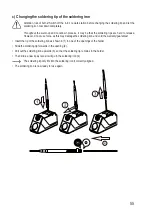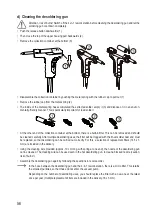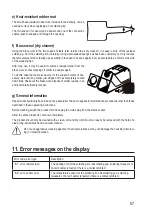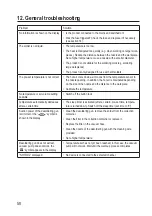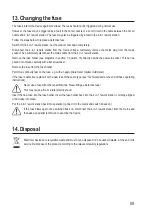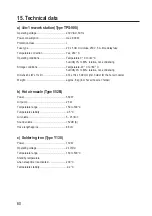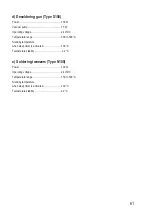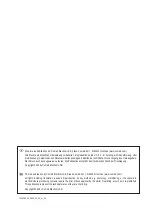
59
13. Changing the fuse
The fuse protects the device against overload. The fuse should not be triggered during normal use.
However, the fuse may be triggered by a fault in the hot air nozzle or a short circuit in the cable between the hot air
nozzle and 4-in-1 rework station. The fuse may also be triggered by a fault in the 4-in-1 rework station.
Follow the steps below to replace a defective fuse:
Switch off the 4-in-1 rework station. Let the product cool down completely.
Disconnect the 4-in-1 rework station from the mains voltage, completely remove the mains plug from the mains
socket. Then completely disconnect the mains cable from the 4-in-1 rework station.
Remove the fuse holder (see diagrams in section 7, position 15) directly beside the power-in socket. This can be
prised out of place carefully with a flat screwdriver.
Remove the fuse from the fuse holder.
Perform a continuity test on the fuse, e.g. with an appropriate meter (digital multimeter).
If the fuse is defective, replace it with a new fuse of the same type (see “Technical data” at the end of these operating
instructions).
Never use a fuse with other specifications. Never bridge a defective fuse!
This may cause a fire or a fatal electric shock!
Insert the new fuse into the fuse holder. Insert the fuse holder back into the 4-in-1 rework station, correctly aligned,
until it locks into place.
Put the 4-in-1 rework station back into operation (connect it to the mains and switch it back on).
If the fuse blows again once switched back on, disconnect the 4-in-1 rework station from the mains and
then ask a specialist technician to examine the device.
14. Disposal
Electronic devices are recyclable waste and must not be disposed of in household waste. At the end of its
service life, dispose of the product according to the relevant statutory regulations.

